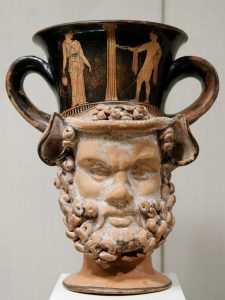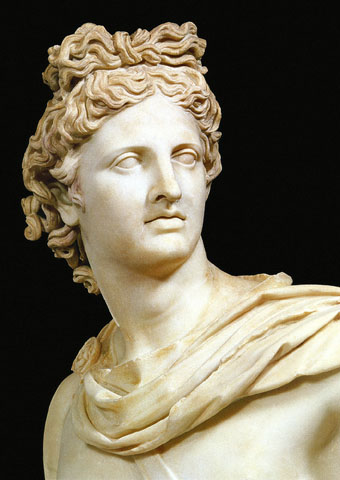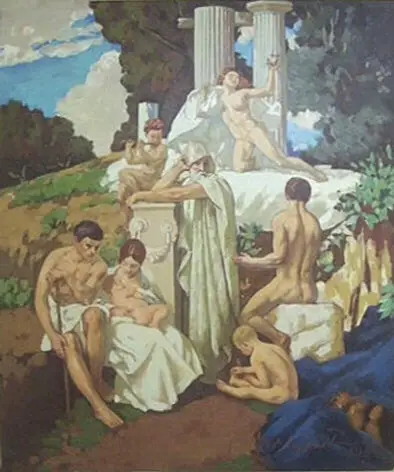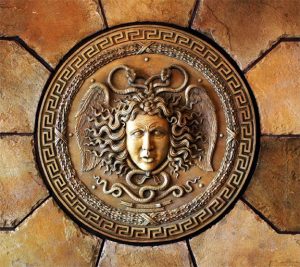Ancient Greece produced some of the marvelous Ancient Greek Artwork the world has ever seen. The art of the ancient Greek style is characterized by a joyous freedom of movement, freedom of expression, and it celebrates mankind as an independent entity.
Greek life was dominated by religion and so it is not surprising that the temples of ancient Greece were the biggest and most beautiful. They were often built to celebrate civic power and pride, or offer thanksgiving to the patron deity of a city for success in war.

Ancient Greek Artwork
Greek artists of the fifth and fourth centuries B.C. attained a manner of representation that conveys a vitality of life as well as a sense of permanence, clarity, and harmony. The classical Greek sculptor was more of a magician than an artist.
He transcended ordinary subjects into extraordinary universal signs. And in the process, he reversed thousands of years of artistic tradition when he shifted the focus from the supernatural and unknown to more earthly matters. Polykleitos of Argos was particularly famous for formulating a system of proportions that achieved this artistic effect and allowed others to reproduce it.
Throughout history, the human figure had been used by many civilizations as a mere object which signified metaphysical preoccupation. On the other hand, in classical Greek sculpture the figures often depict deities but clearly, the human body becomes the subject of study. The gods were depicted as a mere excuse to study humans. Bronze, valued for its tensile strength and lustrous beauty, became the preferred medium for freestanding statuary.

The Greeks developed three architectural systems, called orders, each with their own distinctive proportions and detailing. The Greek orders are Doric, Ionic, and Corinthian.
The Greeks used many different types of materials in their sculptures including stone, marble, and limestone as these were abundant in Greece. Other materials such as clay were also used but due to their brittle nature very few have survived. Greek sculptures are very important as the vast majority of them tell us a story about Gods, Heroes, Events, Mythical Creatures and Greek culture in general.

Greek Sculptures
A large number of marble sculptures have been destroyed by using these as building material after the early Byzantine Christian Emperors ordered the destruction of all pagan related sculptures. Some good examples survived as private pieces belonging to the upper class, such as the Aphrodite of Cnidus that was transported to Constantinople.

Greek sculptures were different from what we usually see today from the copies or originals that survived. Greek sculptures were painted and these two arts sculpture, painting, and Greek Artwork were combined together to increase the reality.
The Glyptothek in Munich provided recently new amazing colored versions of some Aphaia temple statues by analyzing traces of color. Greeks artists were probably the first who signed their work. Sculptures were very important for the Greeks.